
As well as how to pack a punch with lime green–like contestant Lucy Tiffney did in this Sussex home from episode 15–season 3 of The Great Interior Design Challenge delivered a plethora of new ideas for working with everything from fabric to bark to leather.
First up, my favorite: FABRIC!
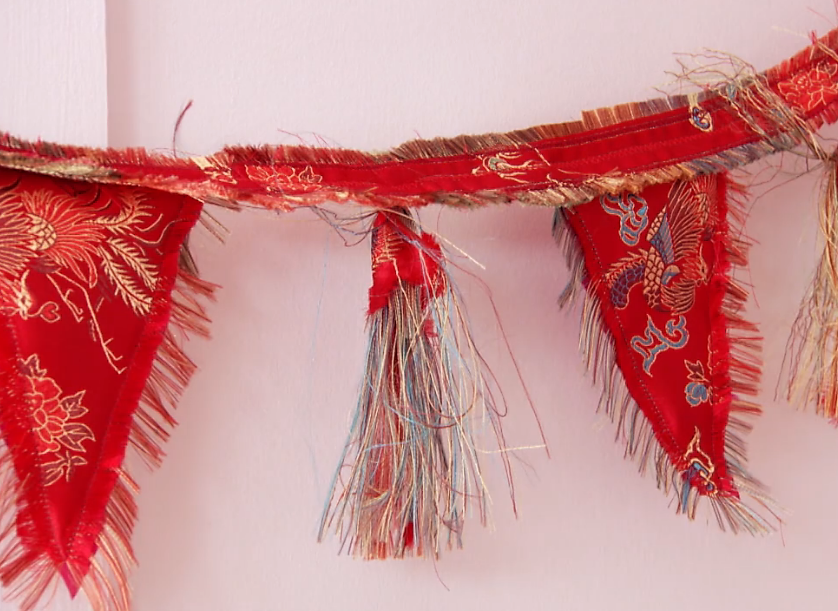
I could just as easily title this section, “All About Anne.” Contestant Anne Curtis, that is, who wowed me in episode 10 with her “way with the fray” in concocting this bunting for a preteen girls’ bedroom in a southeast London 1970s self-built home. It wasn’t the bunting itself, so much as the technique, which she’ll use more later.
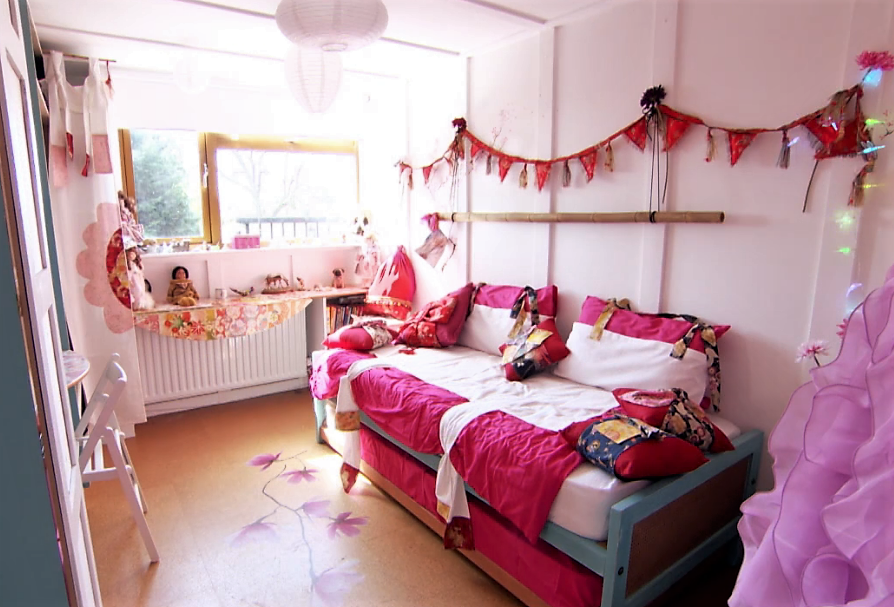
The larger thematic concept was Japanese-style and, granted, the result is a bit busy (for my tastes anyway). But focus on the individual details–the innovations in fabrication.
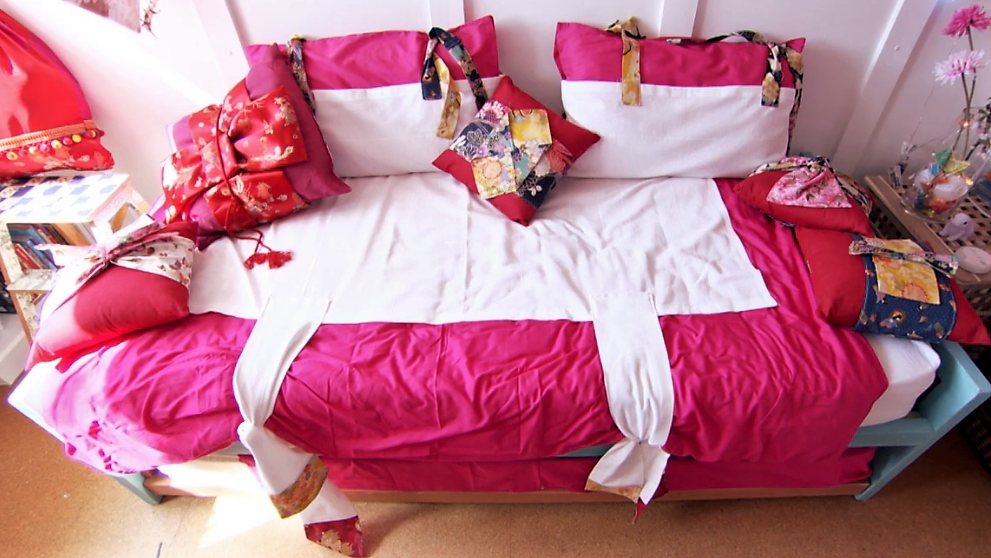
Particularly those pillows, which merit a closer look…
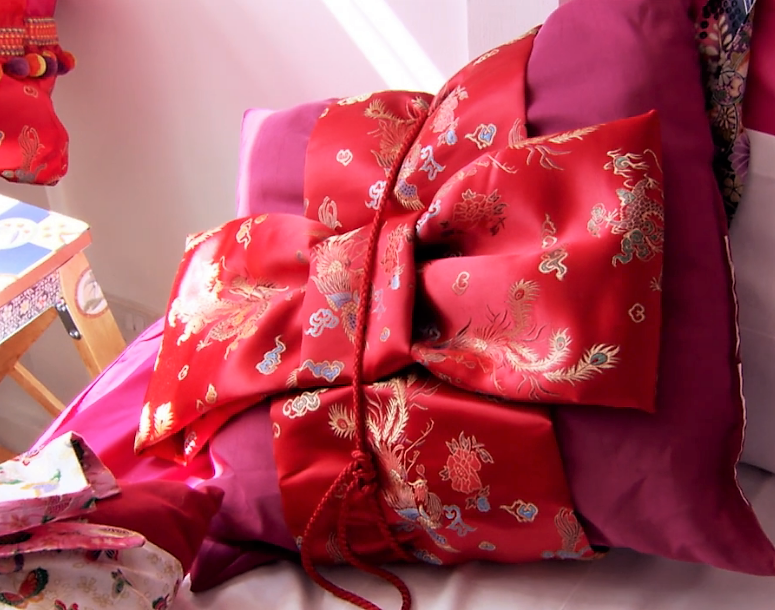
BBC 
BBC
Anne is a repository of great ideas. She’s the kind of designer who makes me SEE differently, and she didn’t stop here.
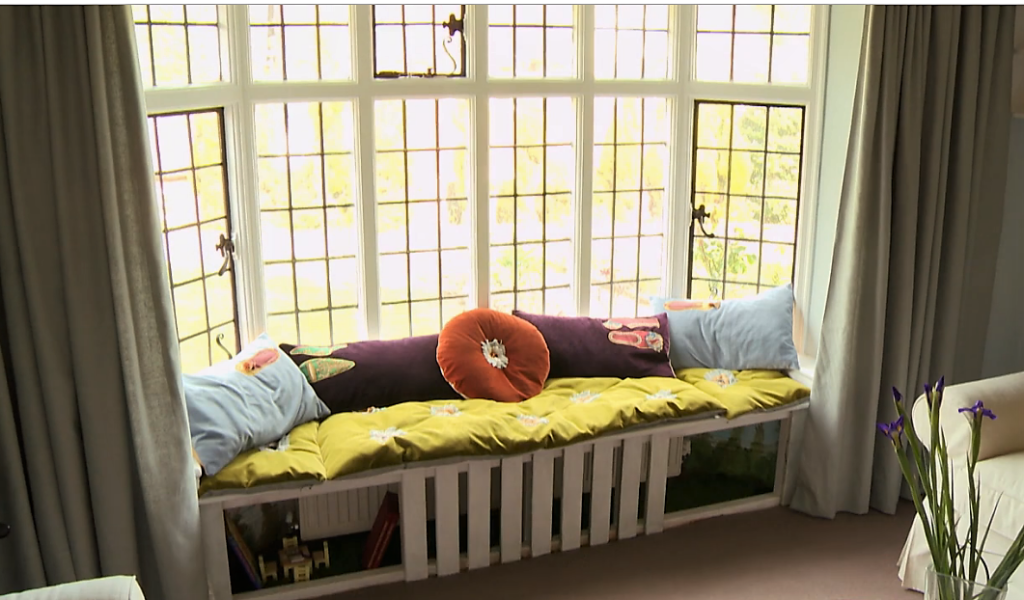
Next up were her fabric creations in episode 11 for this sitting room in a late 19th century arts and crafts home in Bournville, a suburb of Birmingham.

BBC 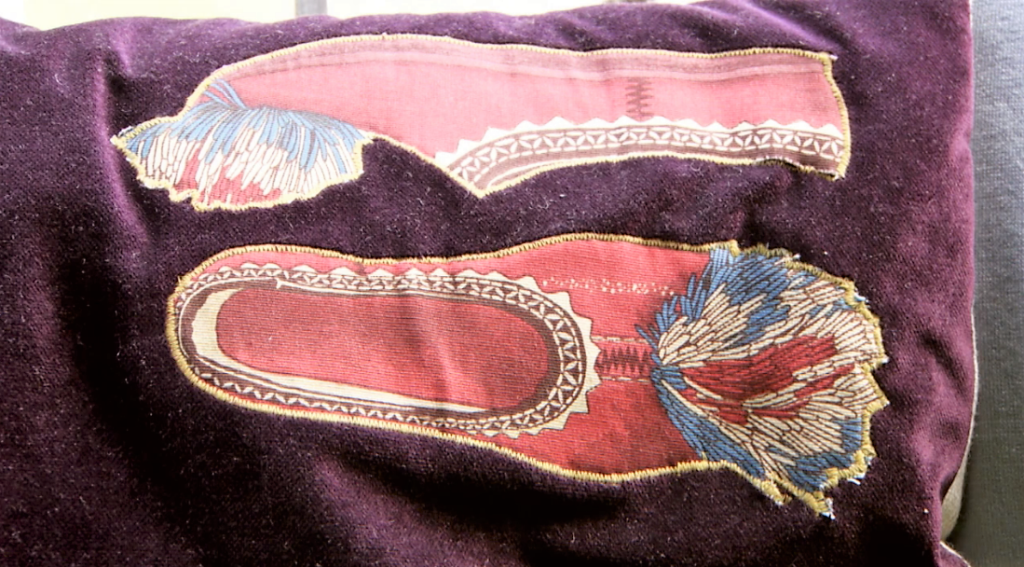
BBC
These beautifully appliqued slipper pillows got me thinking maybe I could try applique, too.
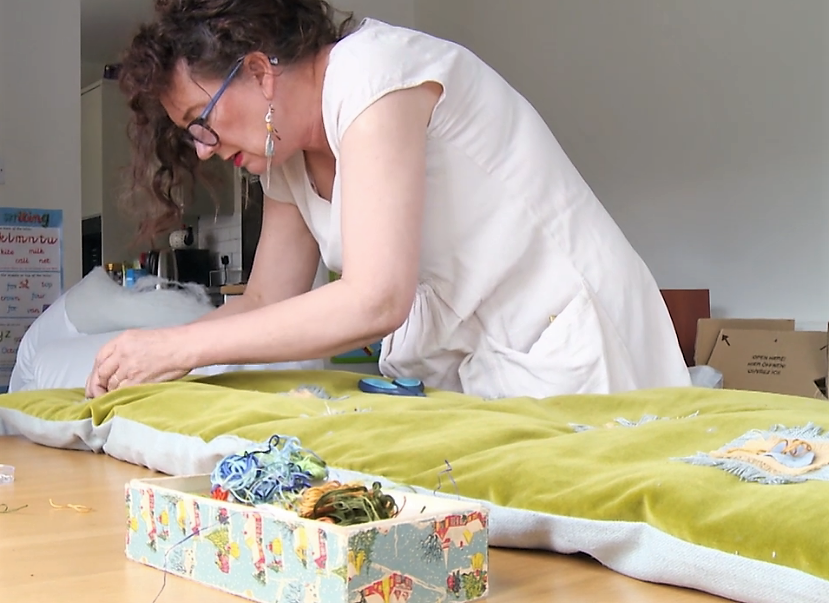
But what really wowed me were the fabric flowers she concocted from frayed scraps for the windowseat cushion.
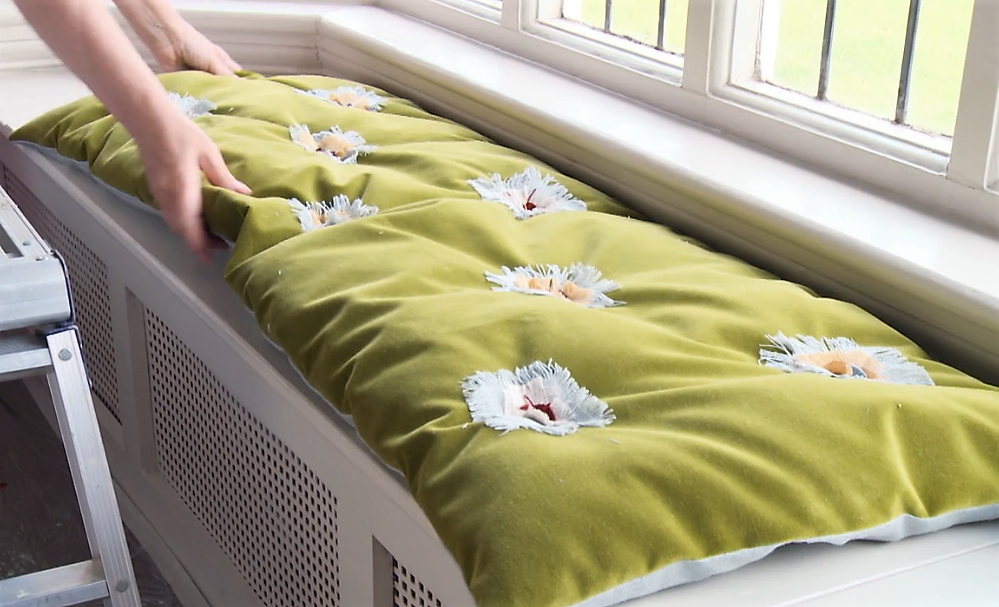
When she put the cushion in place her first exclamation was that the flowers looked as if they were growing in the grass, and I agree, the effect was magical.
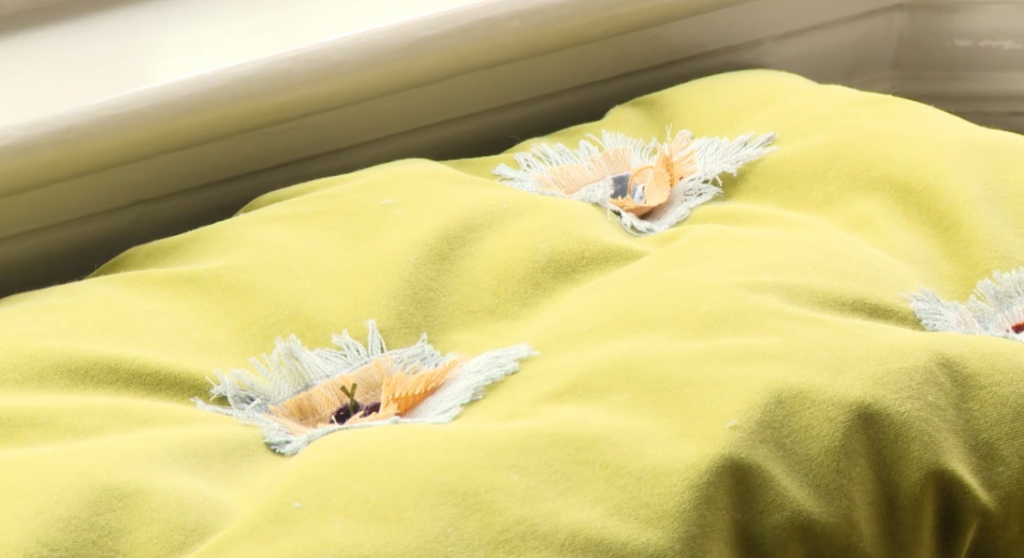
Anne’s flowers are what inspired the embellishments on some of my own bespoke pillows in my Etsy shop. But Anne wasn’t done yet.
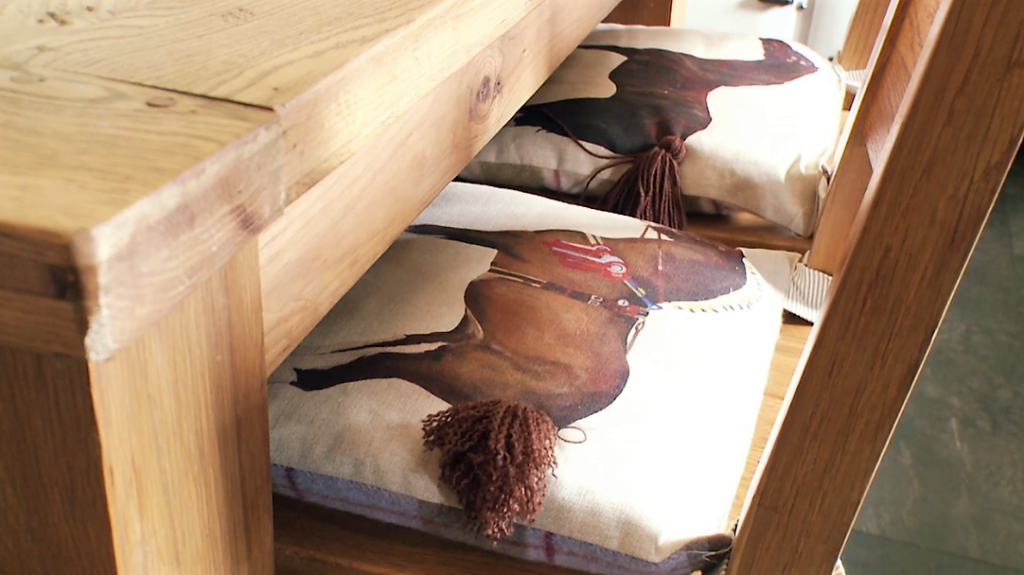
She also crafted these whimsical seat cushions for a North Yorkshire farmhouse kitchen in episode 12.
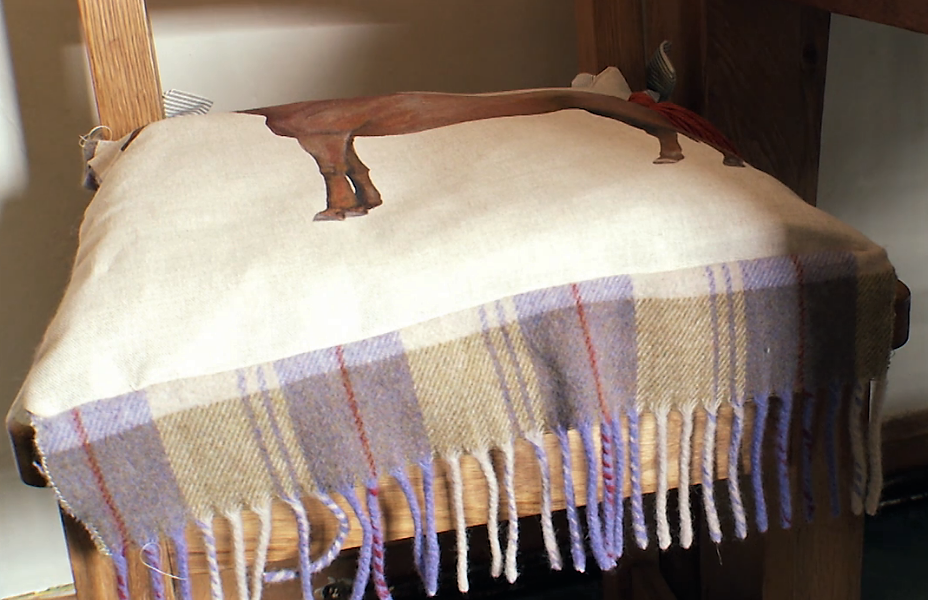
BBC 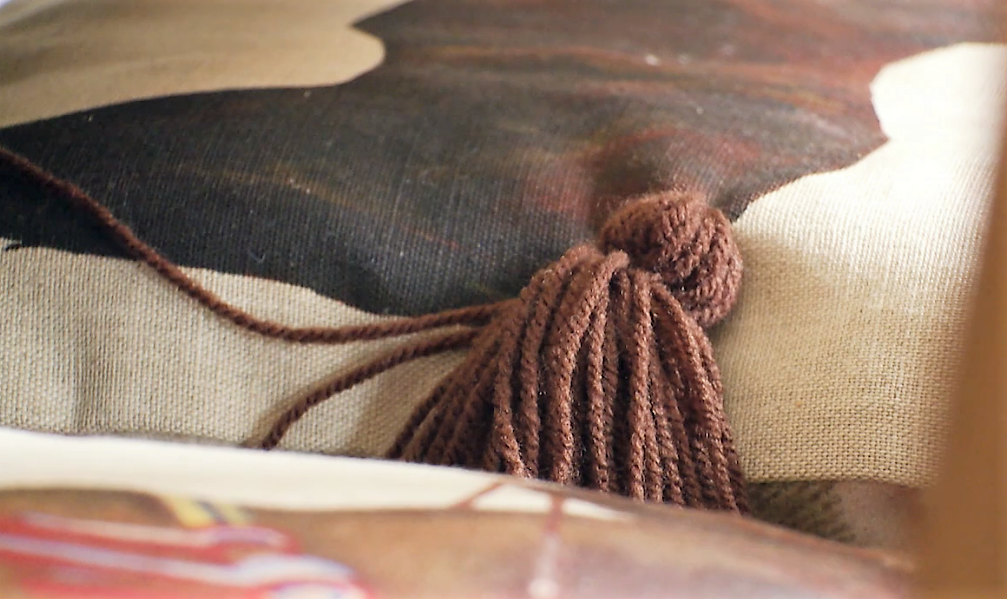
BBC
Not only did she repurpose a throw blanket (think horse blanket!) and utilize the fringe on the cushion front, but check out the yarn tails on the horsey print! How cute!

Enough about Anne already. Lucy pulled some amazing fabric tricks out of her kit, too. If you can look past the gorgeous Swedish box bed she built and handpainted in episode 6 for this timber-framed home in Robertsbridge, East Sussex, you’ll see what I mean.

It’s the borders made of vintage fabric, which she hand-sewed onto the plain draperies.

They just seem to echo the designs in the bed. And their primitive workmanship is what makes them so effective here, particularly against the clean lines of the modern rocking chair and sisal carpet.
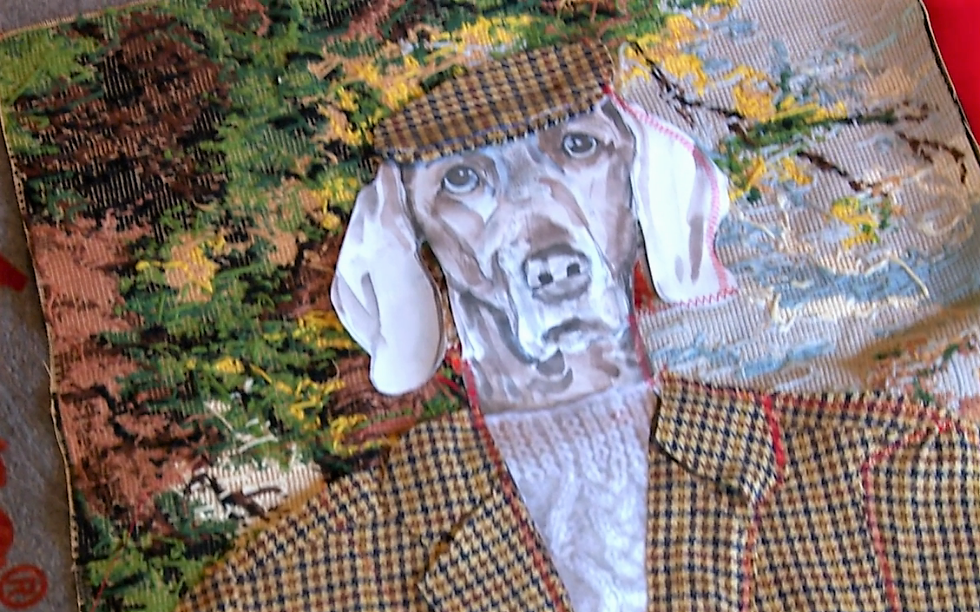
Lucy also pieced together a portrait of the homeowners’ pet in episode 14, the redo of a Wells, Somerset, medieval cottage. Lucy mounted the heat-transferred image on a vintage needlepoint, then “dressed” the dog in fabric scraps to give the portrait more dimension.
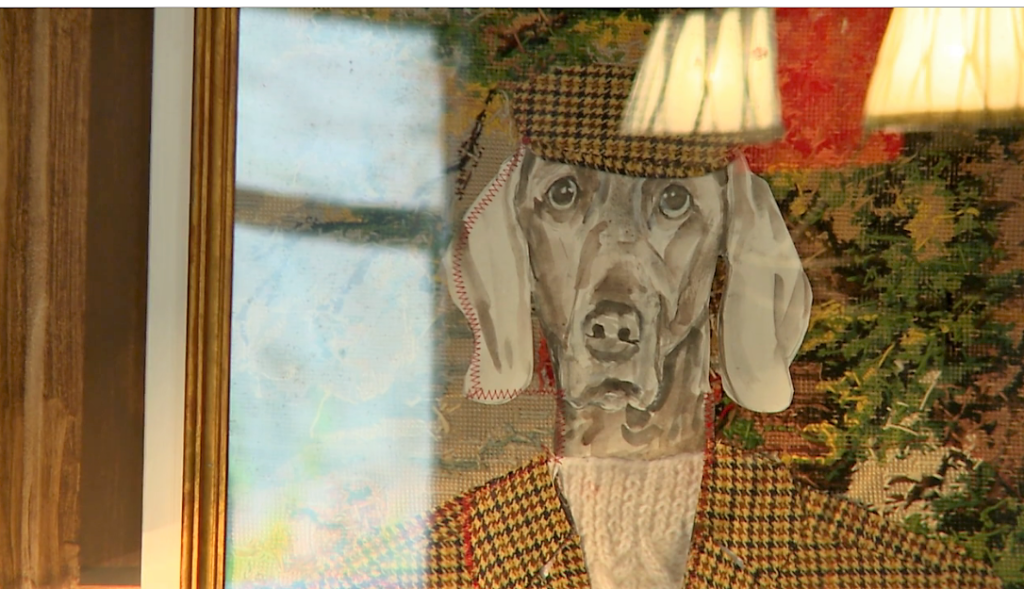
My favorite part is the one ear stitched like a baseball. Who wouldn’t love a portrait like this of their pet? I just may concoct one of the Mazester!
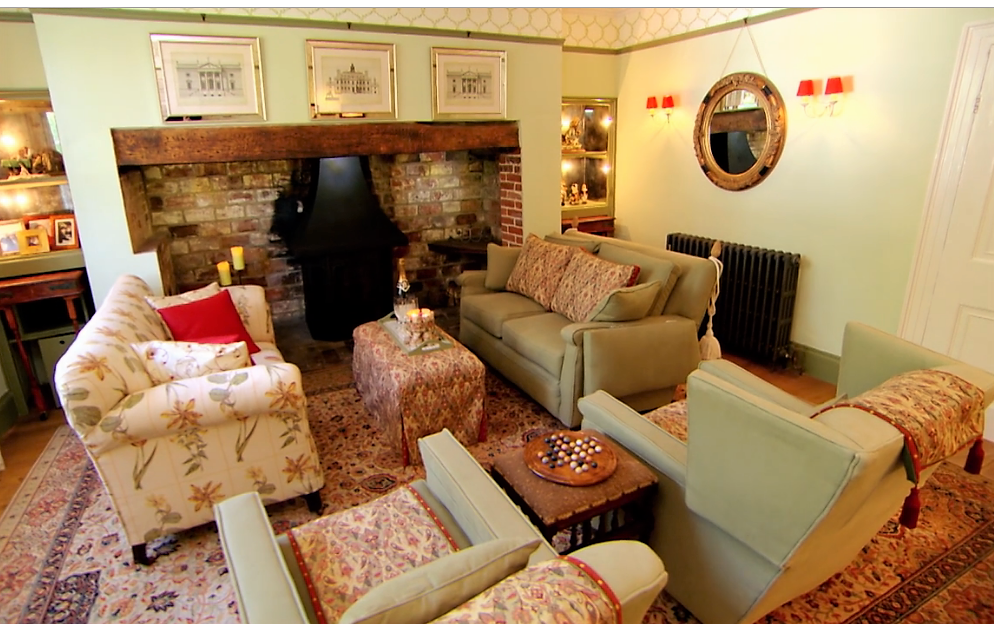
Contestant Frankie Flood also wowed with his use of textiles. In this episode 2 revamp of a sitting room in a Rolvenden, Kent, weatherboard cottage I particularly like how he used fabric in loose cushions, runners and seat girdles to give the owner’s furniture a new look without a full-scale reupholstery. It’s a formal look, but ingenious nonetheless.
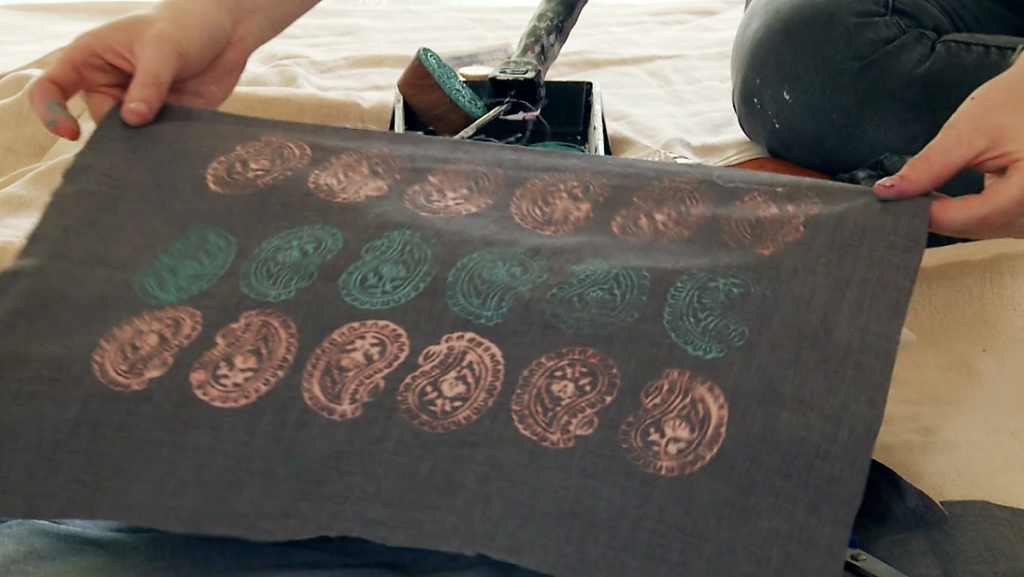
In my previous GIDC posts (season 1 and season 2), we saw blockprinting of fabric done by adding color. In episode 9, contestant Jamie Reed blockprinted by taking color out with a bit of bleach on the patterned wood block instead of paint.
Material girls–and guys!
Many of the contestants used everyday materials in extraordinary (to me!) ways.

BBC 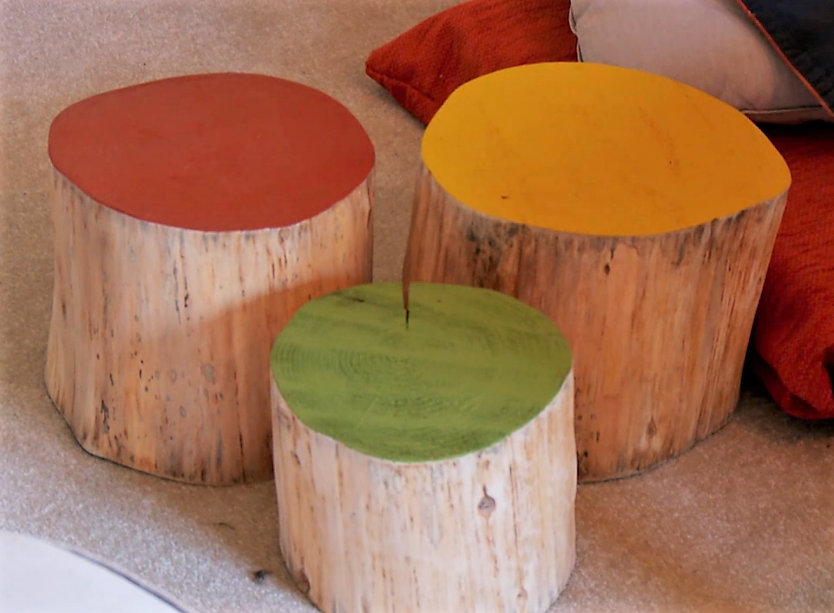
BBC
In episode one, contestant Jane put a tree trunk on wheels (those suckers are heavy!) and used it as a nightstand (left) in the master bedroom of a 1930s modernist apartment conversion in the Peckham area of south London. Jamie put a different twist on the same idea in episode 7, where he used tree trunks as stools and painted the tops (right) for the Tissington, Peak District, owners of a timber-framed cottage.
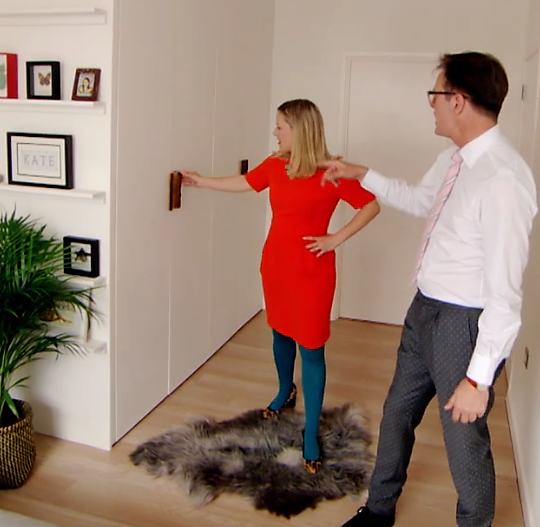
BBC 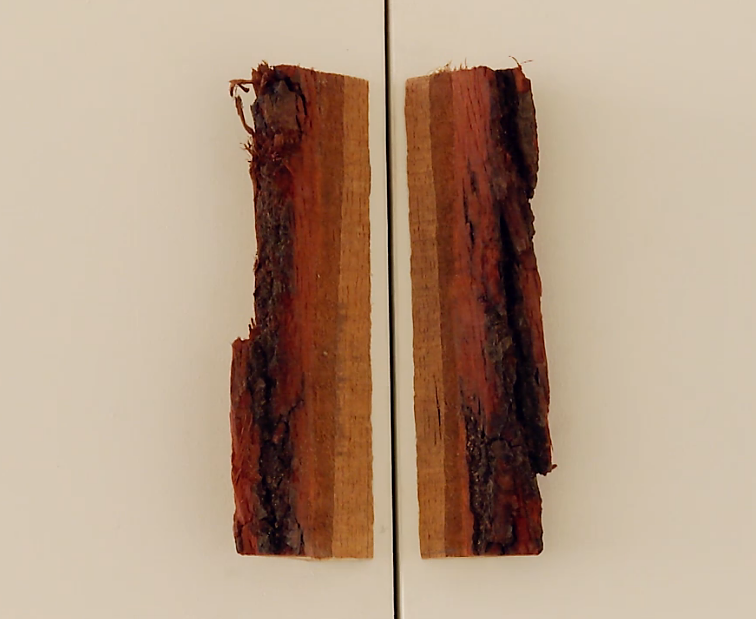
BBC
Jane didn’t stop at the table, though. She incorporated bark into the handles of her homeowner’s wardrobe. Looks cool, I agree, but watch out for splinters!
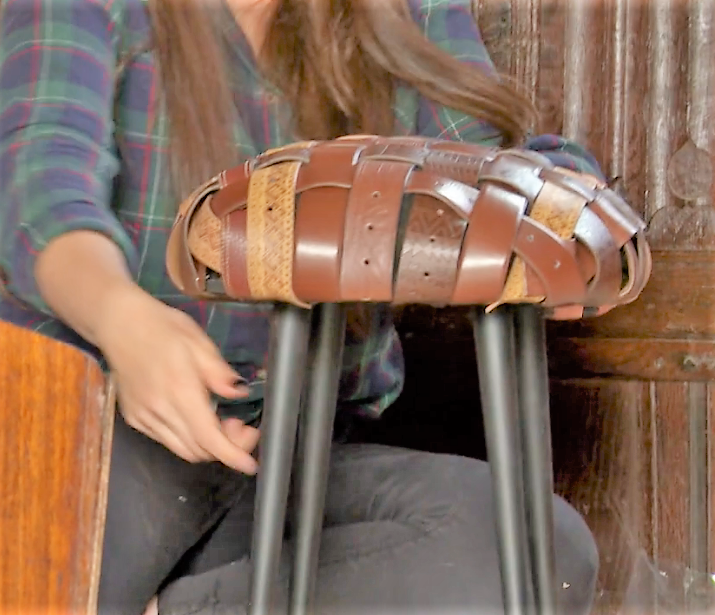
BBC 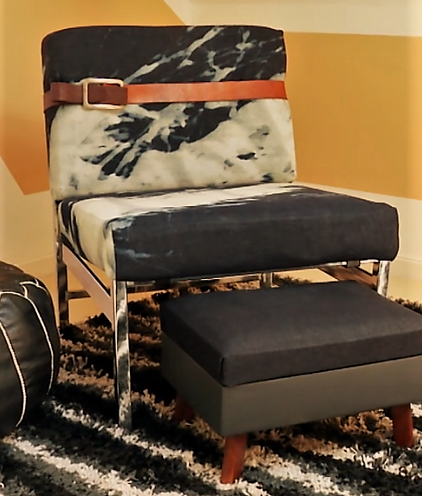
BBC
Leather belts got upcycled, too. Contestant Holly wove a footstool (left) from some in episode 2. And (spoiler alert!) eventual winner Sarah Mitchenall used one to trim a cowhide chair (right) in episode 9’s attic bedroom redo in riverside homes near the Thames in Marlowe.
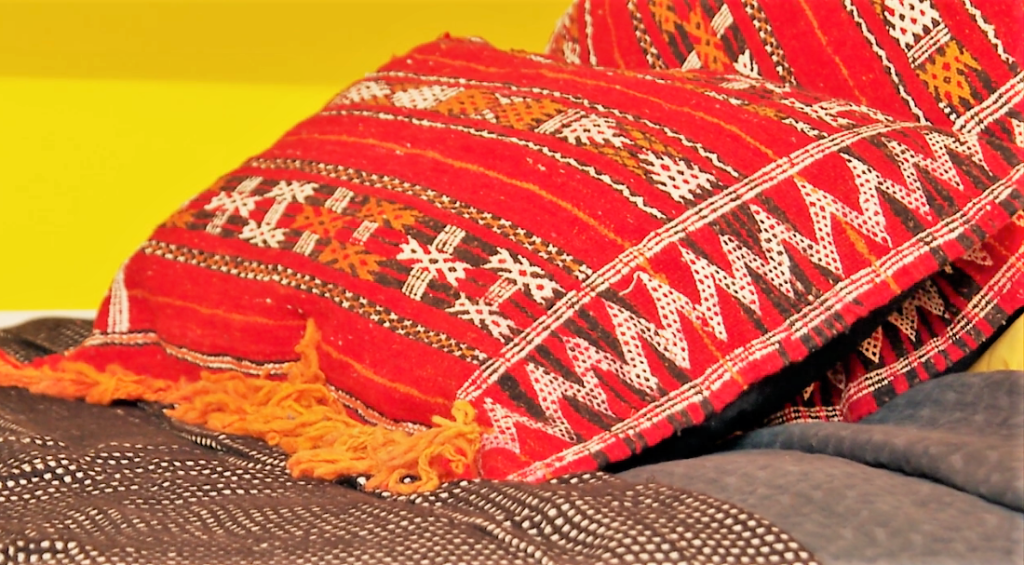
BBC 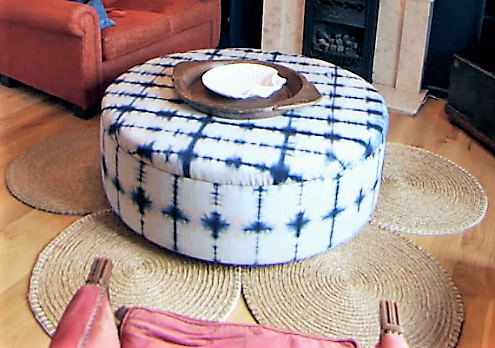
BBC
In that same heat, Sarah packed a wallop with the cushions she crafted from rugs (left). Then in episode 13’s semifinal–coastal cottages in Beer on the Devon Coast–she sewed together smaller grass mats to form a larger area rug (right).
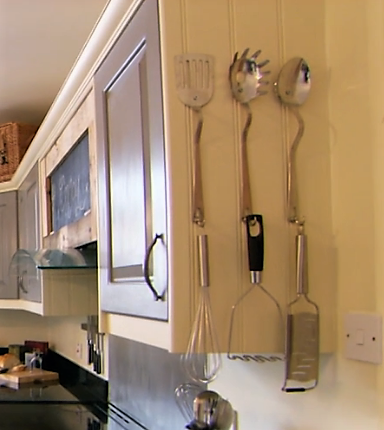
BBC 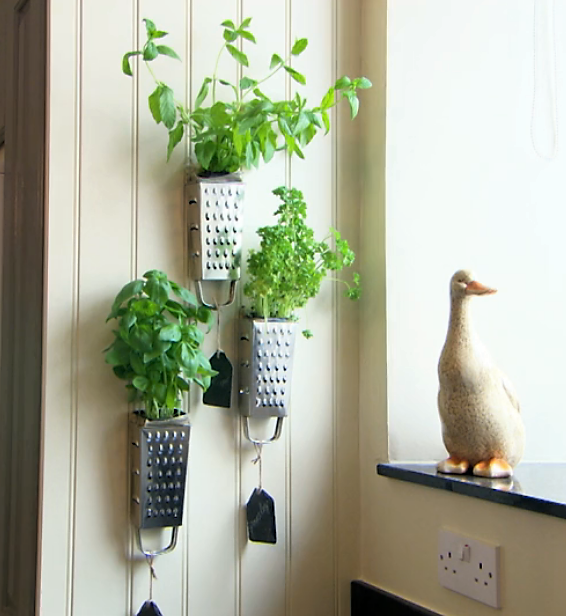
BBC
Not to be outdone, contestant Talie repurposed kitchen utensils as hooks (left) and graters as herb pots (right) in episode 9–both VERY clever ideas.
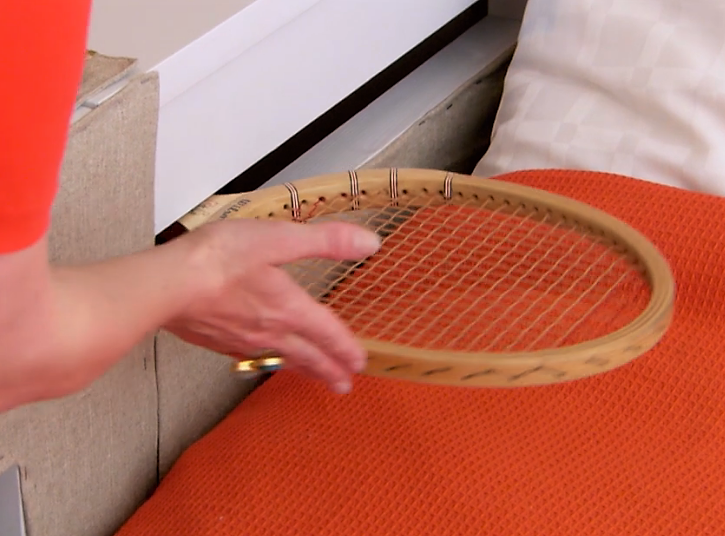
BBC 
BBC
As was Frankie’s way with the vintage tennis racket all contestants received in episode 1 to incorporate into their designs. Frankie styled this foldaway cup table to fit inside the larger bedside table–nifty, if not all that practical.
Trip the light fantastic

Though it never appeared in any of the redesigned rooms, contestant Rob Fawcett blew the judges away with this bicycle lamp, fashioned in episode 6’s junk challenge. Can’t you just picture it lighting a loft wall?
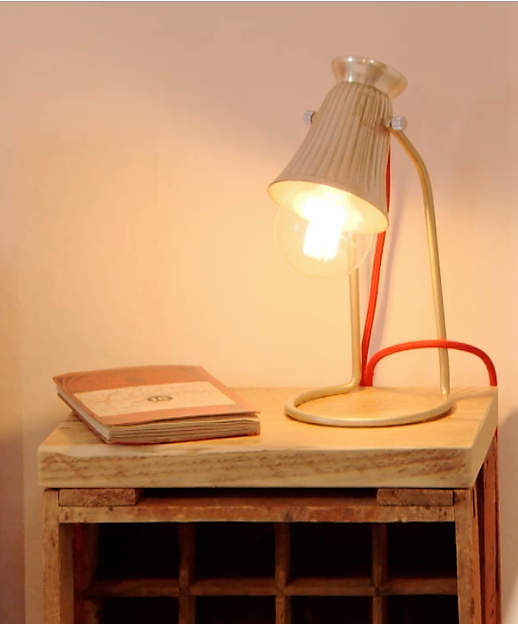
BBC 
BBC
Rob was no one-trick pony either. He repurposed a metal vase into a table lamp shade (left) in episode 4, and made a cut glass whisky decanter into a table lamp base (right) in episode 5.

BBC 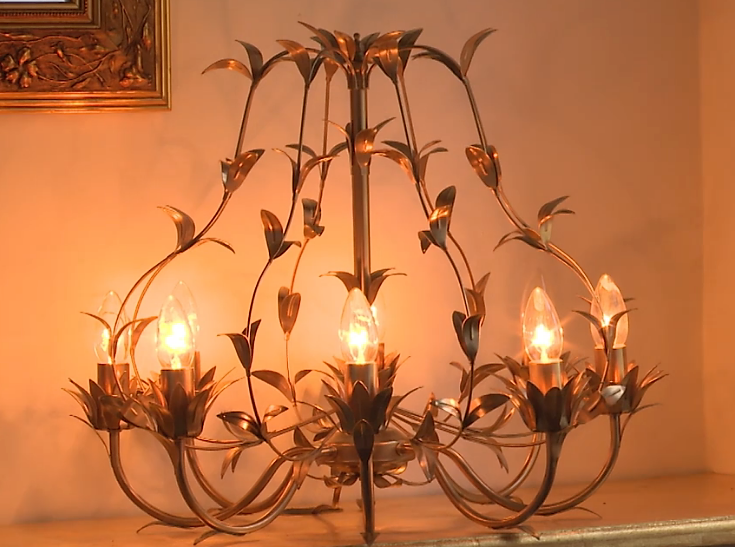
BBC
Not to be outdone, Lucy made a chandelier from fence slats and a vintage capiz-shell shade (left), also in episode 5, and Sarah made a table lamp from, well, a chandelier, in episode 15.
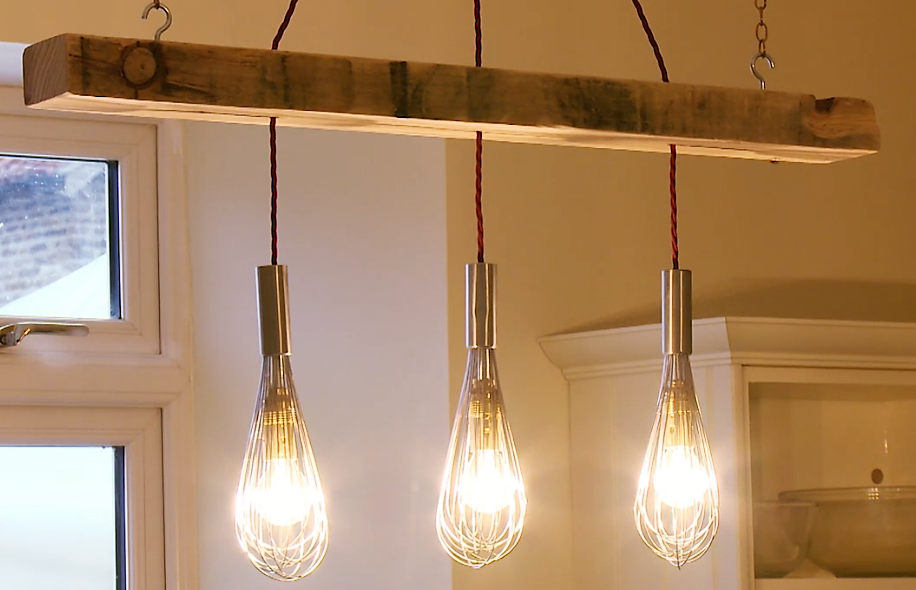
Talie had high hopes for her balloon whisk light in episode 12–and it was a good idea–but it just didn’t wow the judges. IMO, she needed more whisks–5 instead of 3–and larger whisks. I would have skipped mounting them in a line and instead arranged them to hang as a bunch.
Not off-the-shelf shelving

Episode 4 saw contestant Angelica Edwards Marsh design some eye-catching shelves that accentuated the quirky architecture of this attic bedroom in a thatched cottage in Briantspuddle.

Then in episode 5 in Bath, her shelf designs angled again–this time to hide the view of what they held when entering this Georgian terrace sitting room from the side.
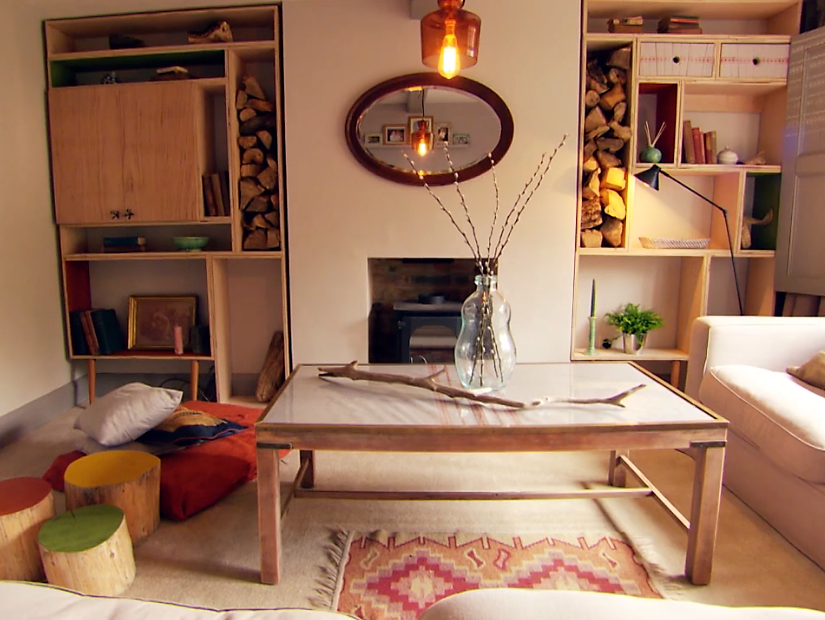
Jamie pulled off some assymetric box shelves with maximum impact in episode 7.
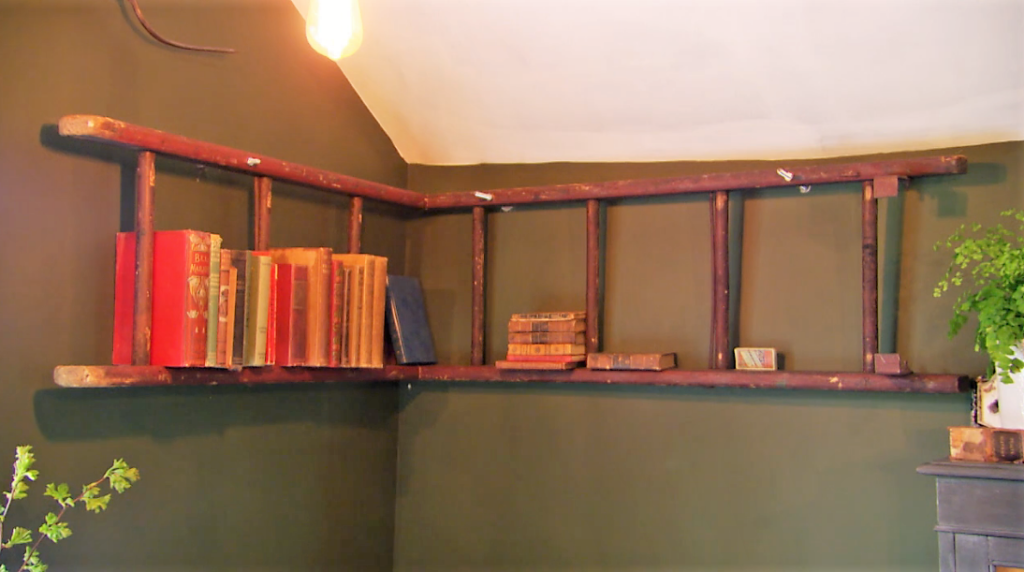
And in the same episode, Sarah’s ladder wrapped into a corner simply wowed me. It was the mitered corner that nailed it!
Tricks with paint
The season brought a few paint ideas to love as well.
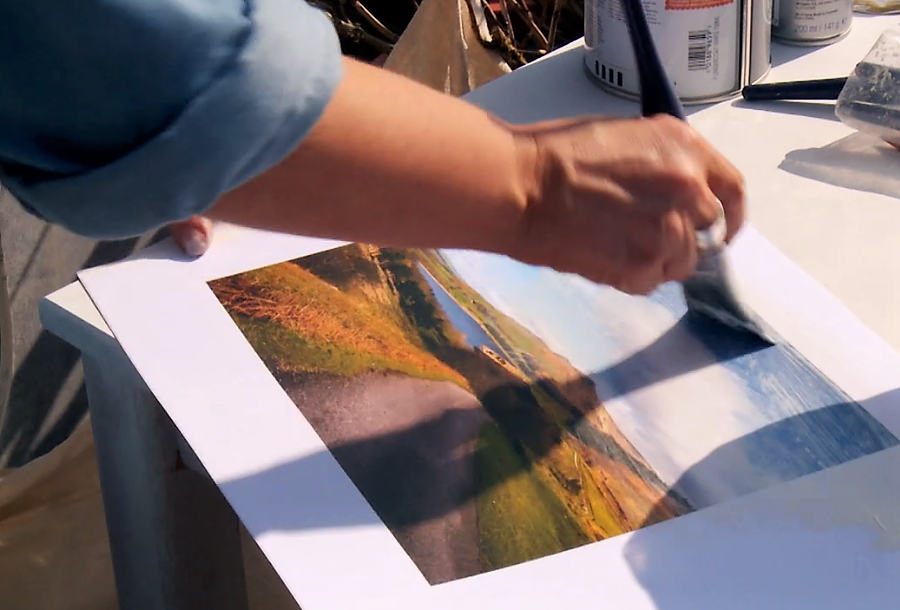
First was episode 7 contestant Rachel’s use of white emulsion to turn a photograph of the Peak District printed off the internet into something more painterly.
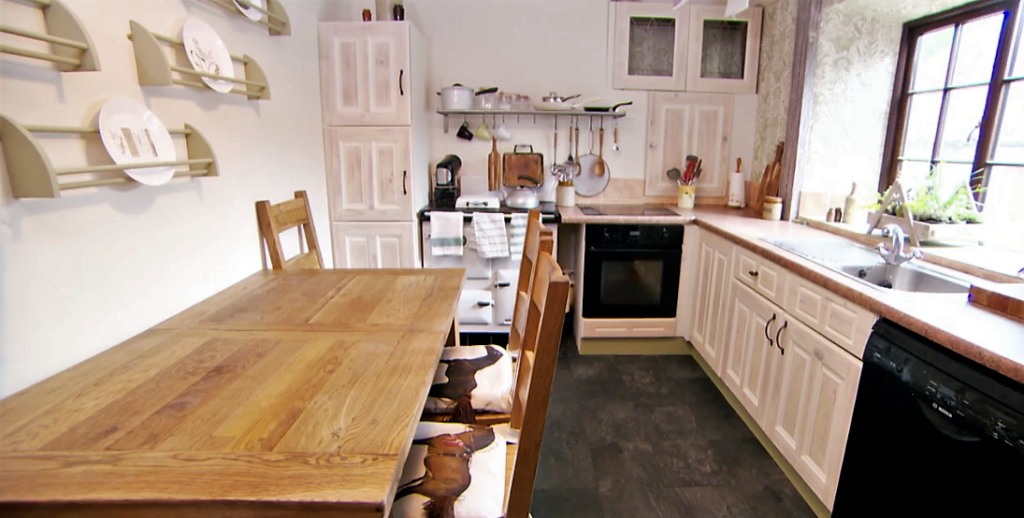
BBC 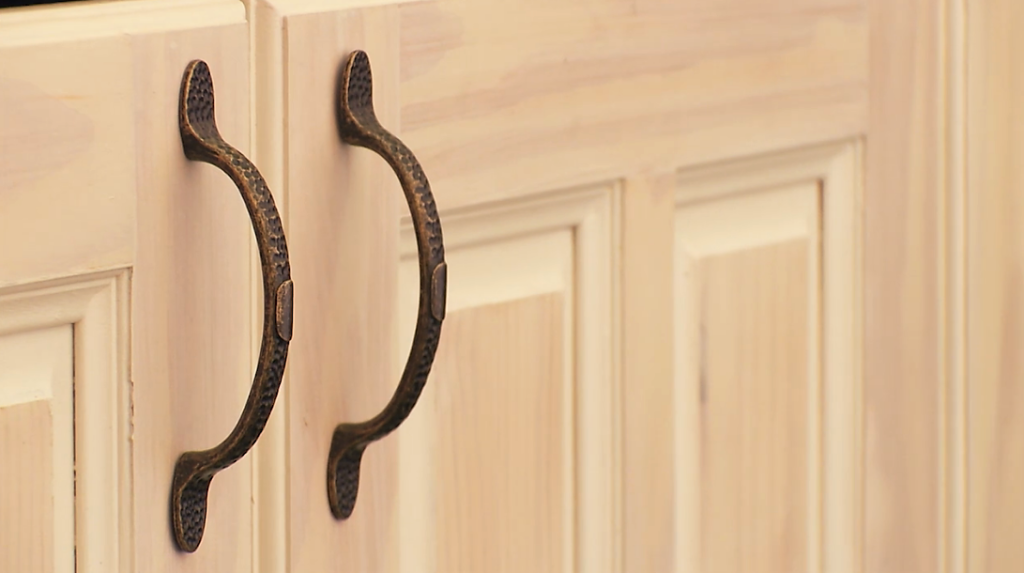
BBC
Next was Anne’s ingenious use of whitewash in episode 12 to lighten up the orangey-wood finish on cupboards in a North Yorkshire farmhouse kitchen. I particularly liked this idea because I worry that solid-painted cabinets, if not done professionally and to a strict finish, will chip and flake. But whitewash is more forgiving. The grain of the wood underneath already shows through, and the thinner finish is less likely to flake and become unsightly.

Contestant Lily Sawyer used bold colors in episode 5 to zone this Bath kitchen, bringing all the colors together in her midcentury modern mural…

…as well as a controversial ceiling border the judges poo-pooed all along then raved over at the end. Visionary that I am, I loved it all the way through. ;->
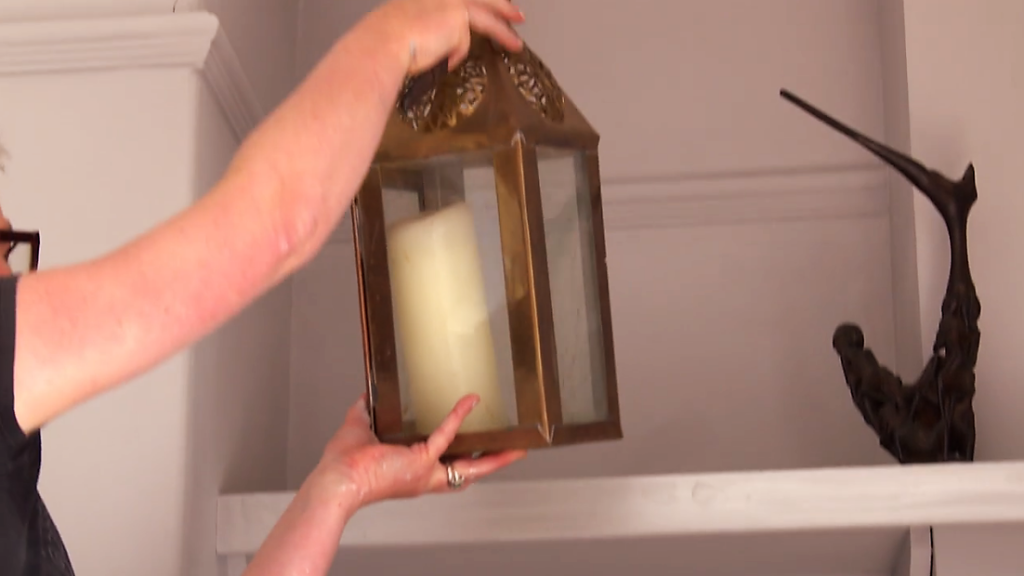
BBC 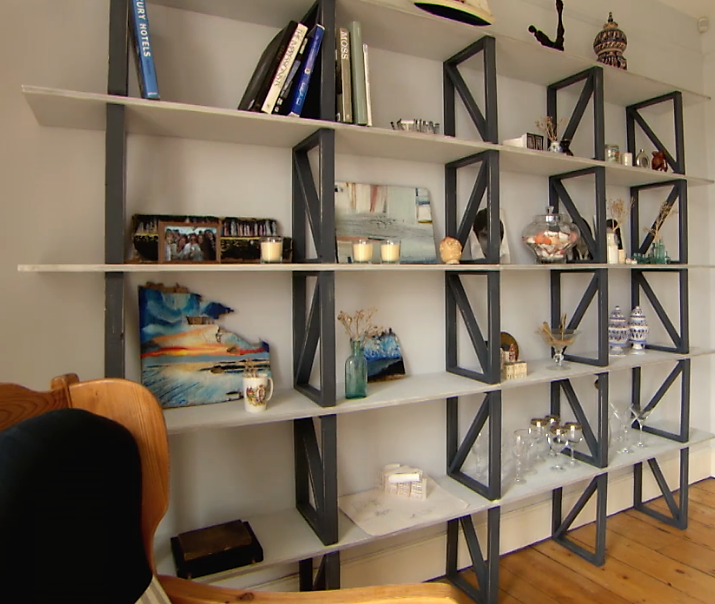
BBC
Lucy played with line accents a bit, too, in the same heat. Though it’s a bit tough to pick out, she accented the built-in shelf edges on the left with silver metallic, while the support pieces on the freestanding ones on the right got a contrasting darker treatment.
This is an idea I may steal for my own living room shelves, which are light gray against a light gray wall. We painted an opposite wall in that room charcoal gray to tie in with the adjacent kitchen/dining area, and I’m contemplating taking the charcoal gray onto just the shelf edges.
I don’t want to paint the shelf surfaces because I change out what’s displayed quite often and I don’t want to deal with scratching. But if I did just the edges–in either paint or a fabric/ribbon trim–I would get the same accent effect without worry about scratching.
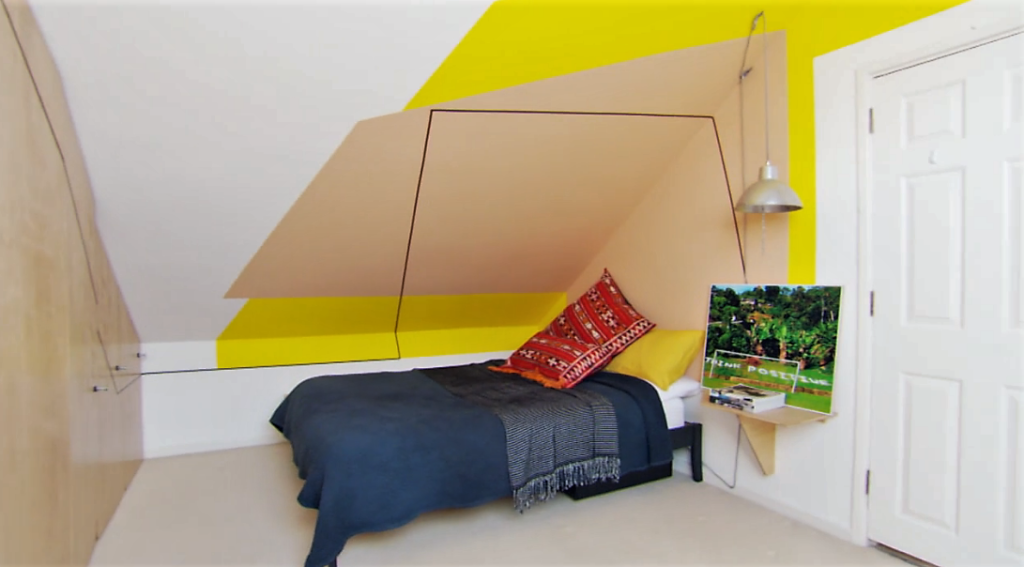
Sarah, as it turns out, held onto her very own bag of paint tricks, as this attic bedroom she designed in episode 9 attests. Notice how the color blocking acts as a canopy over the bed area…

…and neatly divides the space into zones.
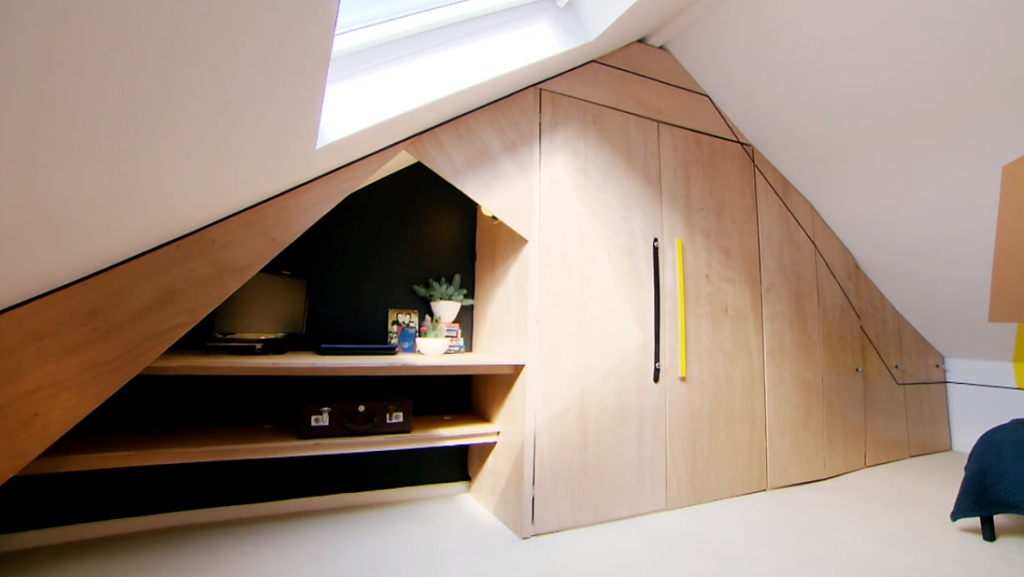
The built-in desk and wardrobe area mimics the color blocking, which, in turn, mimics the room’s architecture. Clever, CLEVER Sarah!
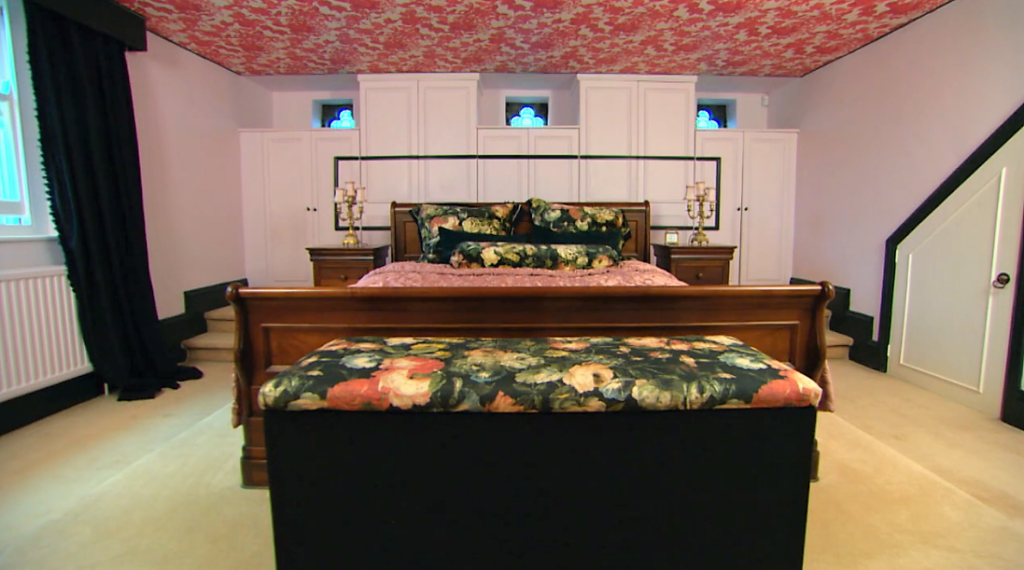
Her skill became more and more apparent as the competition continued, until the final when this bedroom helped park her in the winner’s seat. Notice how the black-painted architrave is accented by the black molding installed OVER the wardrobe molding in the area behind the headboard.
The wallpapered ceiling outlined in more black molding got mixed reviews from the judges, but I liked it. Her original intent for this room included dark green walls, which the homeowner nixed. What a missed opportunity! They would have been GORGEOUS.
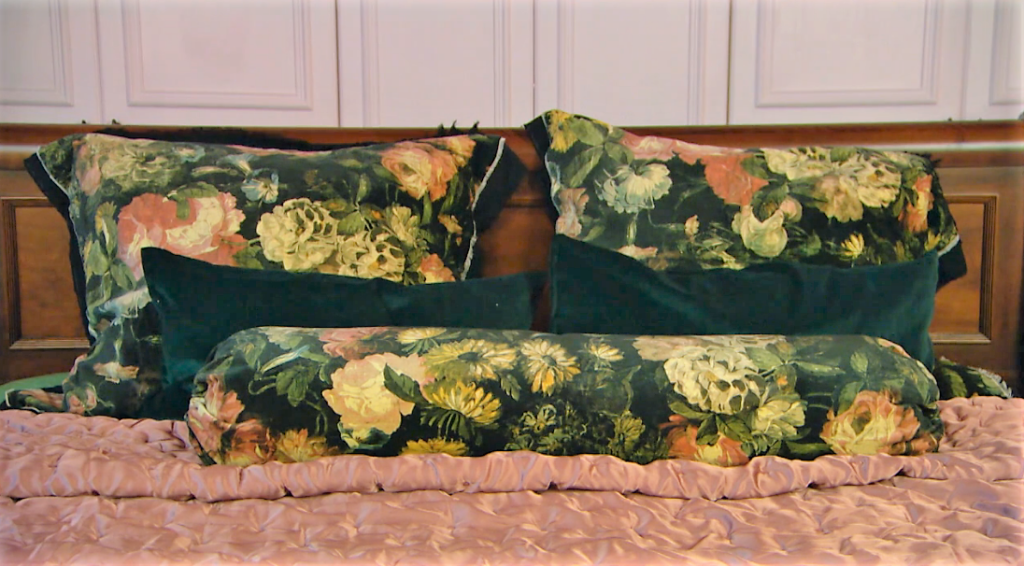
Particularly paired with what was my favorite part–thefloral she used in the bed pillows. It was simply to-die-for!
If you want more…

- Check out my other Binge-Watching the GIDC posts: 10 Faves From Season 1 and Season 2 Tricks & Triumphs. And stay tuned for a rehash of the fourth and final season.
- Tour the homes of contestants Anne Curtis and Sarah Mitchenall. And follow the text links in this post to learn more about some of the other contestants and what they’re doing now.
- You can also access all the episodes in all four seasons of GIDC on Amazon Prime.
- Finally, show narrator Tom Dyckhoff has a couple of books out that detail seasons 1 and 2. Follow the (affiliate) links to check them out and perhaps buy:
- Season 1 winner, Sarah Moore, has a couple books you might enjoy as well, on crafting with vintage items:


